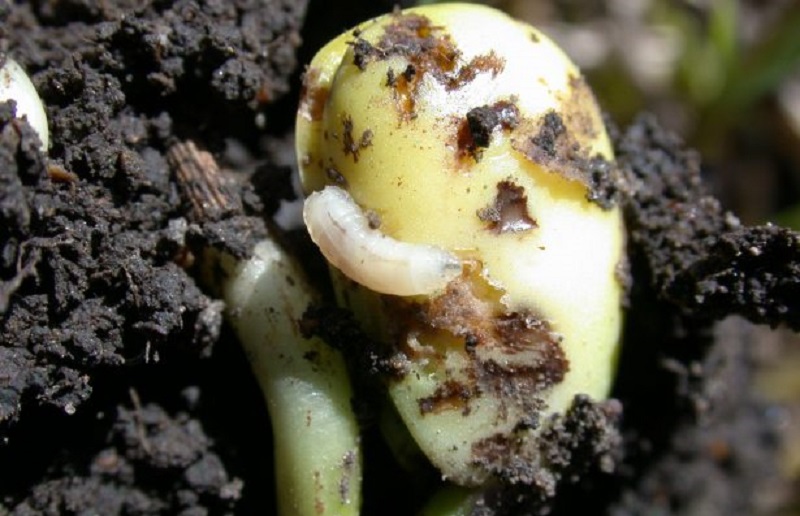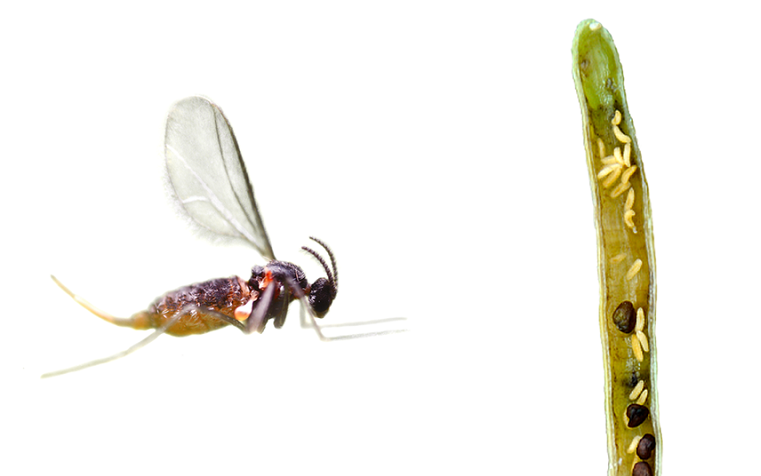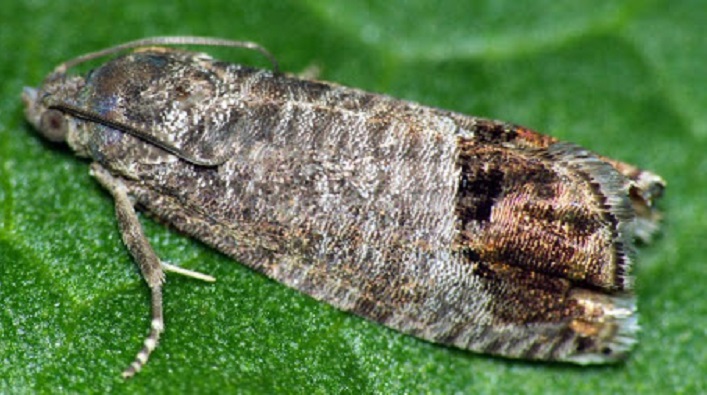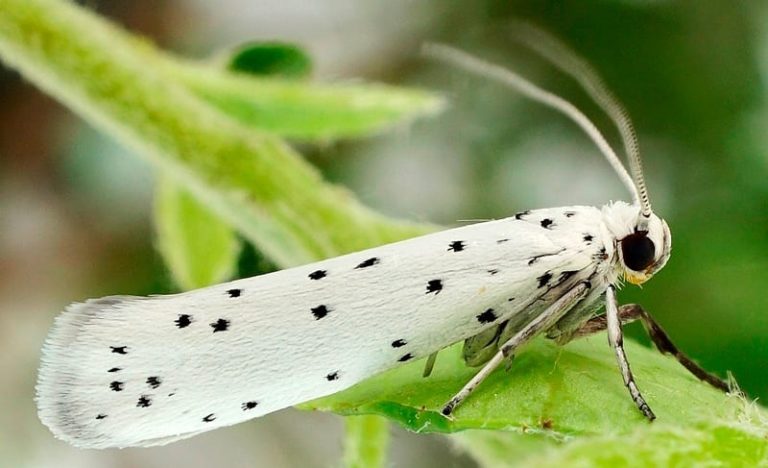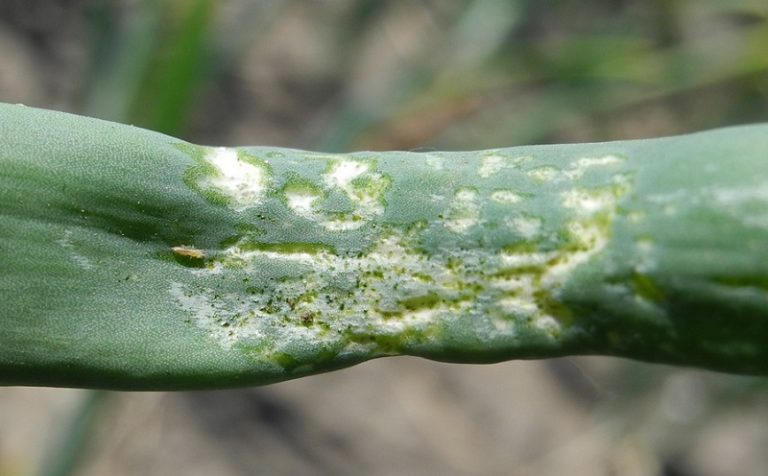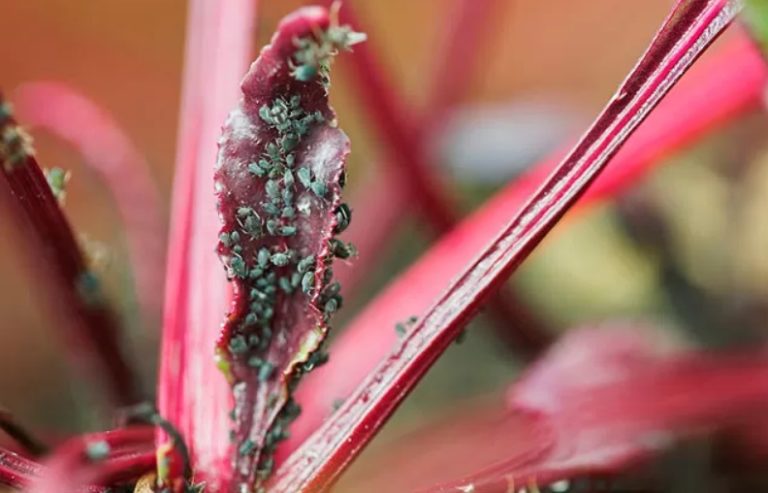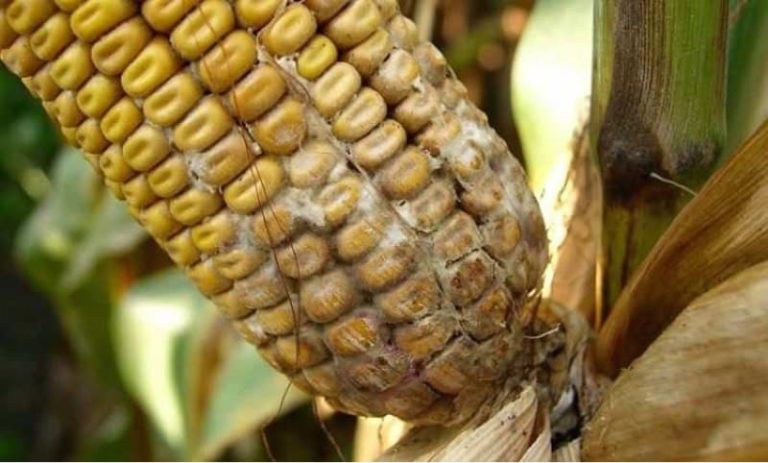Sprout fly – signs of appearance, methods of struggle
The sprout fly (Hylemia cilicrura) is distributed throughout Ukraine. It damages corn as well as pumpkin, seeds and seedlings of beans, beets, spinach, peas, lupins, grains and other crops.
The spread of the sprout fly is facilitated by cold, humid weather, which leads to a weakening of the corn. Also, its spread is facilitated by climatic problems. It is indiscriminate to the type of soil, but it causes the greatest harm if there is a large amount of organic matter (fresh green manure or manure) in the soil.
The sprout fly can be easily recognized by the following signs: It is a small insect 3-5 mm in size with three dark brown stripes on the back and a dark long line on the abdomen. The eggs are white, oblong about 1 mm. The larvae are larger than adult insects – up to 7 mm, off-white.

During the summer, three generations of the sprout fly have time to develop. Wintering occurs at the larval stage in the ground, and departure occurs in the second half of April. Masonry takes place on moist, organic soil, especially if there is unplowed manure. Within 5-10 days, larvae appear, which gnaw out the middle of the watermelon, damage the seeds, which rot, which ultimately leads to thinning of seedlings. Over time, the larvae gnaw the roots of seedlings, make moves inside them, such plants usually die.
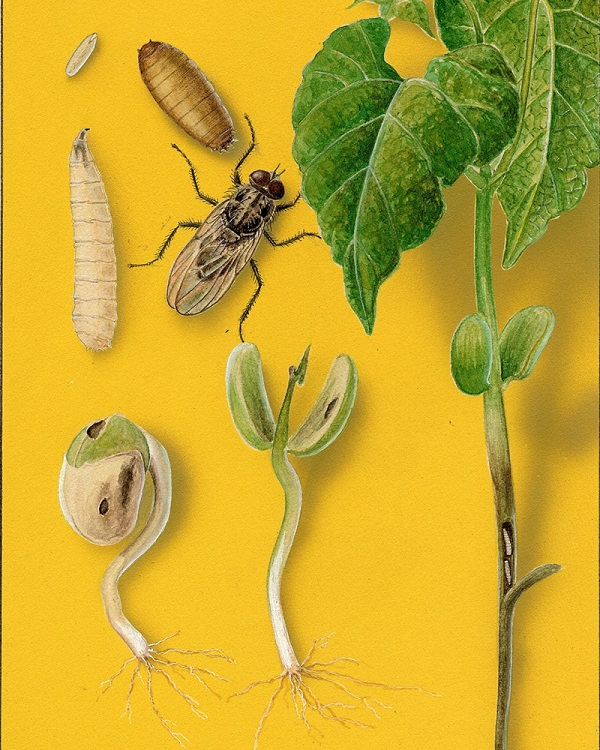
Measures to protect against sprout flies
At the stage of preparation for sowing, it is necessary to carefully examine the seeds to identify sprout fly larvae. Treat the seeds before sowing, and it should be carried out at the earliest possible time. Plowing for finch should be carried out 2-3 times during the season.
Carry out systematic control and removal of weeds. Removal from the field and destruction of post-harvest residues.
The use of insecticides in the sowing period.

